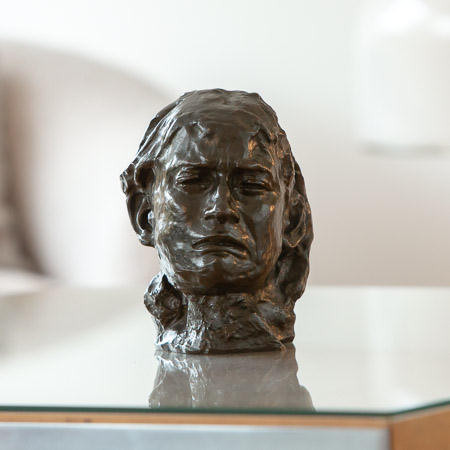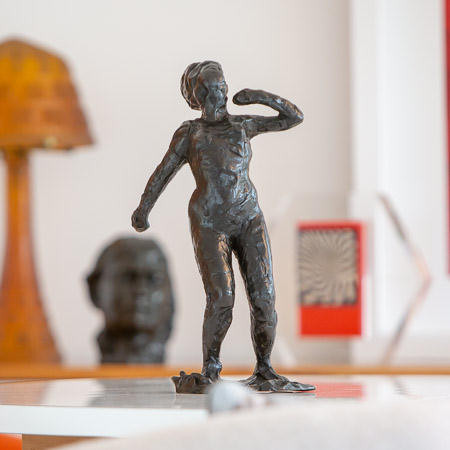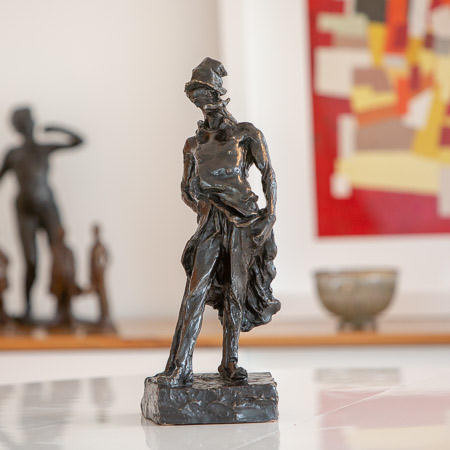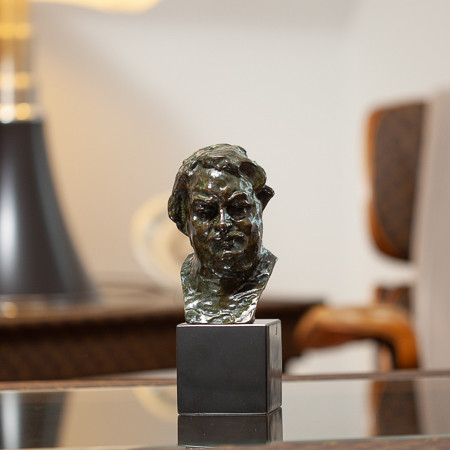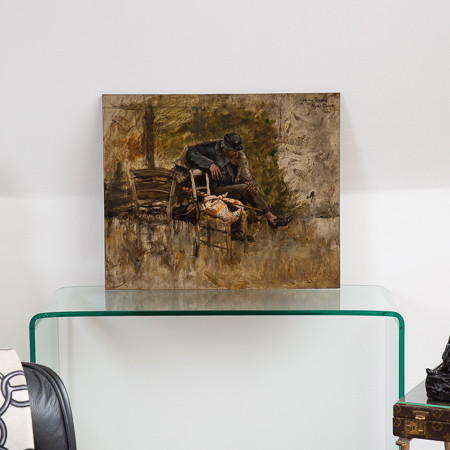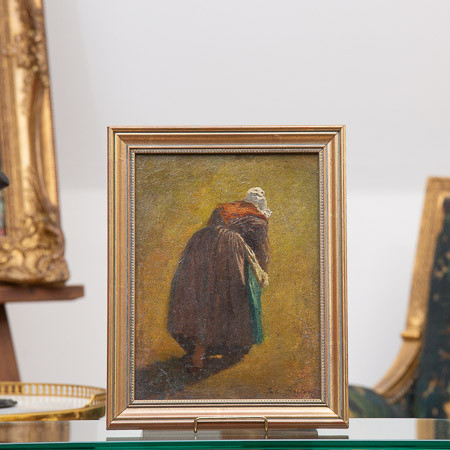About
«Le Puits-Noir», oil on its original canvas signed in the bottom left corner «G. Courbet». This work has been recognized by the Gustave Courbet Institute and will be included in the future catalogue raisonné of Gustave Courbet as an artwork by «Gustave Courbet». A certificate from the Institute Gustave Courbet, dated November 13, 2022, will be given to the buyer.
The painting Le Puits-Noir, created between 1855 and 1865, was executed during a period when the works of Gustave Courbet (Ornans 1819 - La-Tour-de-Peilz, Switzerland 1877) enjoyed great success between 1856 and 1870. Despite the scandals provoked by some of his paintings, he regularly exhibited at the Salon and gathered a circle of enthusiasts and defenders who ensured his recognition. This success was reinforced by the State's purchase of Ruisseau couvert in 1865 by Count de Nieuwerkerke, the Superintendent of Fine Arts in the service of Napoleon III, which is now preserved at the Musée d'Orsay.
The painting Le Puits-Noir is part of a series of more than fifteen representations of the location, reflecting the painter's fascination with this site dating back to 1855. The recurring motif, combining stone, water, and vegetation, depicts the Loue Valley, a site near Ornans, Courbet's hometown in the Doubs department. Most of these works are preserved in museum institutions such as the Musée d'Orsay, the National Gallery of Art in Washington, the Kunsthistorisches Museum in Vienna, the Musée Fabre in Montpellier, the Baltimore Museum of Art, the Art Institute of Chicago, the Rijksmuseum, and the Musée des Beaux-Arts in Besançon.
Le Puits-Noir bears witness to the painter's attentive observation of nature and his desire to summon various natural elements to render a harmonious communion. Valuable insights into the geological peculiarities of this rugged nature were provided to him by Jules Marcou, a Jura geologist whom he met in the 1850s and 1860s. The stream and the banks of the Brême River, surrounded by luxuriant vegetation and towering cliffs, occupy the main part of the composition, leaving little room for the celestial vault. In contrast to the vocabulary of artistic movements of the time, dark colors, rather than light, dominate the center of the painting and seem to captivate the viewer's gaze. However, while the painter's palette is limited to shades of green, gray, and blue, it brightens during this period. Courbet explores this new composition from the early 1850s onwards, freeing himself from his masters (Charles-Antoine Flajoulot, Charles de Steuben, Nicolas-Auguste Hesse, or Antoine-Jean Gros), as well as from the painters of the Barbizon School, with whom he is associated. He abandons illusionistic principles to represent an intimate perception of the reality of the site. By revolutionizing the plastic conventions of landscape painting and opposing the codes of academicism, he gives birth to the realist movement of which he becomes the leader.
Through his renewal of the landscape genre, Gustave Courbet's modernism paves the way for the Impressionists. He notably introduces the concept of series by painting Le Puits-Noir in the Loue Valley from different angles and at various times of the day. His work influences a new generation of artists such as the painter Édouard Manet, with whom he associates in Montmartre, and Paul Cézanne.
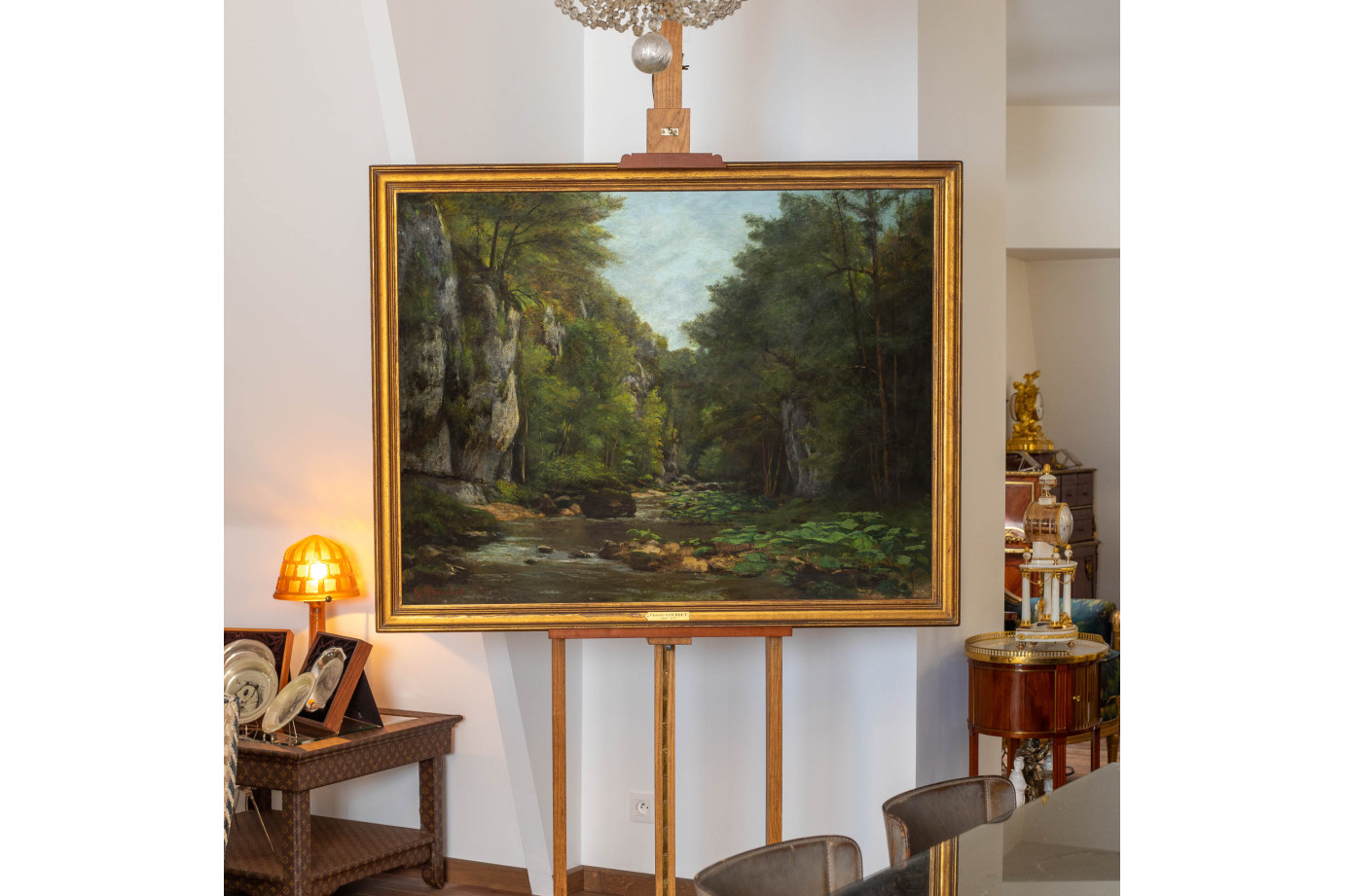
Characteristics
- Year: 1855/1865
- Origin: France
- Artist: Gustave Courbet
- Material or technique: Oil on canvas
- Sizes: 116.5 x 89.5 cm (Width x Height)
Museography
The National Gallery of Art (Washington) has another version of Gustave Courbet's painting titled "The Stream" (Le Ruisseau du Puits-Noir; vallée de la Loue) from 1855 (Accession Number 1943.15.2) in its collection.
The Musée d'Orsay (Paris) has in its collections the painting entitled «Le Ruisseau noir» (inventory number: RF 275), another representation of the Puits-Noir painted by Gustave Courbet in 1865.
Comparable Reference on the Art Market
Major works by Gustave Courbet have become exceedingly rare on the art market, which enhances the significance of our painting, Le Puits-Noir. The most relevant recent comparison dates back to 15 October 2020, during a sale at Christie’s, where an oil on canvas entitled Bords de la Loue avec rochers à gauche was offered—one of the artist’s most sought-after landscape subjects. This work exemplifies Courbet’s fascination with these emblematic sites, much like the landscape presented here.


